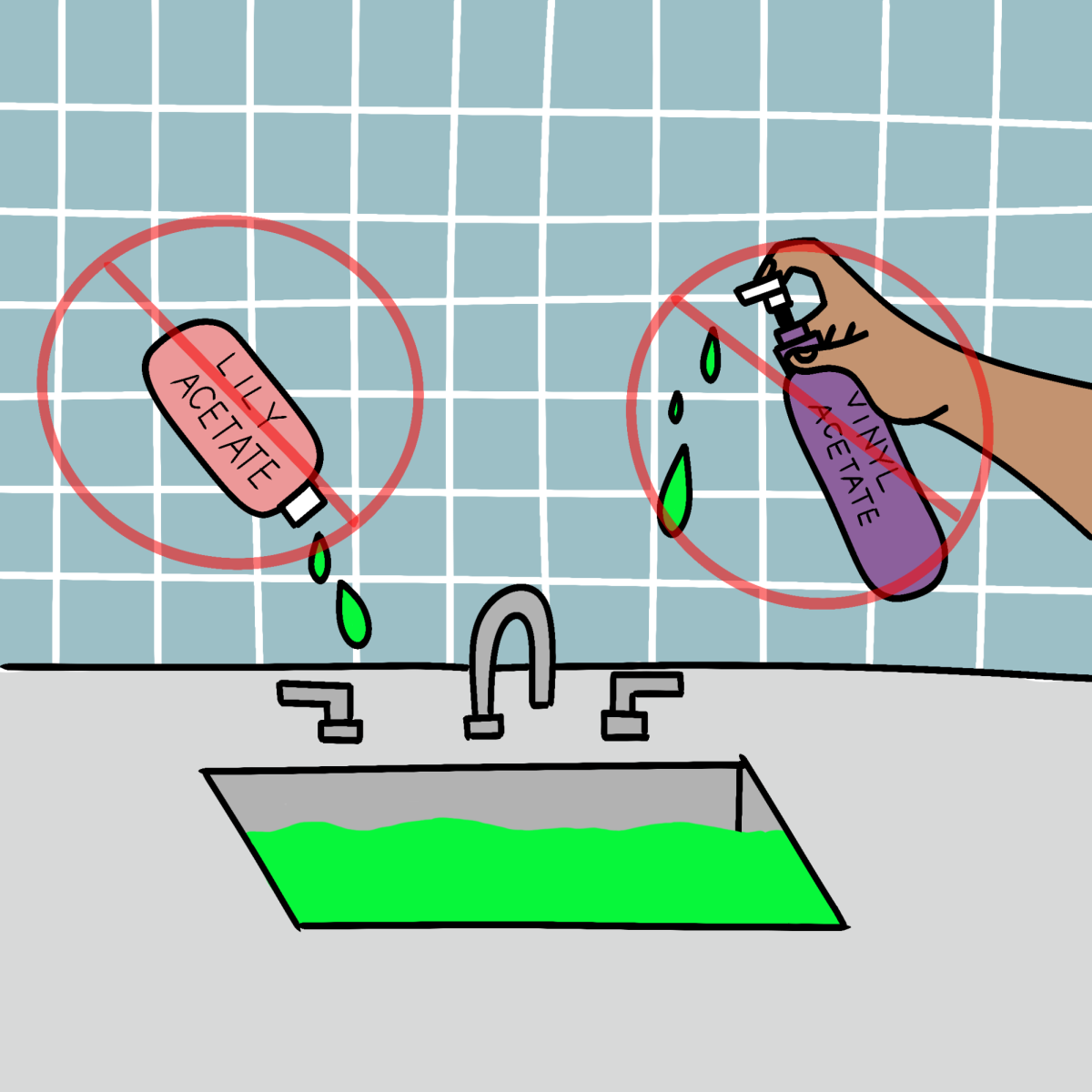Numerous everyday products are all among the unsuspecting potential dangers lurking in consumers’ bathrooms. On Oct. 8 California Governor Gavin Newsom banned 26 potentially toxic chemicals commonly used in personal care products, a considerable addition to the 24 chemicals previously banned in 2020. The ban, intended to protect consumers’ health, sets a precedent that other states should follow since the need for cosmetics safety is too urgent to be ignored.
According to the California news publication CalMatters, the banned chemicals include vinyl acetate, anthraquinone and lily aldehyde among others. Dr. Neil Kline, director of the American Cosmetic Association, explained in an interview with CNN that the banned chemicals have been linked to various health issues, including cancer, genetic defects and environmental degradation. With such health concerns, it is clear that California is making the right decision for its residents’ safety.
The danger of toxic chemicals in certain cosmetics is not limited to those who use those products. While the need for safe cosmetics is important for the safety of those who use such products, it is also integral for the protection of our environment. According to CNN, cyclotetrasiloxane, one of the newly banned ingredients found in some skin and hair conditioners, has been proven to be environmentally degrading as it “accumulates in water and can harm fish and aquatic life.” Evidently, California’s new regulations benefit everyone.
The need for stricter restrictions on cosmetics ingredients is exacerbated by the alarming number of consumers who are misled or unaware of the current regulations. The cancer research center Asbestos reports that one in three people never check cosmetic ingredients and 55% of American women wrongly assume the Food and Drug Administration (FDA) regulates cosmetic ingredients. However, consumers should not bear the primary responsibility for checking cosmetics for dangerous ingredients because it places an excessive burden on individuals to navigate a complex and often deceptive industry.
The cosmetics market is flooded with an overwhelming variety of products, each with its own extensive ingredient list, making it practically impossible for consumers to analyze every label effectively. Cosmetic formulations can be highly technical and involve chemical compounds that the average shopper would need a degree in chemical engineering to understand. Regulations and safety standards should be the responsibility of regulatory bodies, such as the California government and the cosmetics industry itself. Consumers should have confidence that the products advertised to them will not put them at risk of cancer.
Critics of regulations like California’s ban have argued that they stifle innovation and damage businesses by limiting brands’ production. But the truth is that regulations can drive innovation in safer and more sustainable directions. With these 26 chemicals now banned in California, cosmetics manufacturers will be incentivized to explore alternative ingredients that are safe and environmentally friendly.
In her article, “Well-done regulation can spur innovation” Jaime Leverton explains that the purpose of regulations is to establish trust with consumers and future users. Regulations maintain a certain level of openness in product markets which allows research and innovation to be done to meet such regulations. What this shows is that through enacting safer regulations cosmetics companies can actually further innovation in their products because of the transparency it fosters. As Levertone notes, not only will the honesty of cosmetics brands build trust with their consumers, it will also open opportunities for more research to be done to facilitate innovation.
According to the Los Angeles Business Journal, California is home to the largest cosmetics market in the United States. Considering this, it is clear California has a major impact in the cosmetics industry, an impact not all states have, making this decision even more monumental. Cosmetics brands will be more likely to reformulate their products when it keeps them from losing their biggest opportunity for profit in America. This move by California also serves as a wake-up call for the federal government. The United States is far behind other countries when it comes to regulating cosmetics. In the European Union, for instance, over 1,300 chemicals are banned or restricted in cosmetics, while the FDA has only banned or restricted 11, according to The Guardian. This disparity is a glaring indication that it is high time for the federal government to follow California’s lead and prioritize the safety of its citizens. Toxic chemicals are toxic to everyone, not just Californians. Ultimately, with California’s new ban on 26 toxic chemicals, the United States is 26 steps closer to a sustainable cosmetics industry that prioritizes its consumers’ safety.








